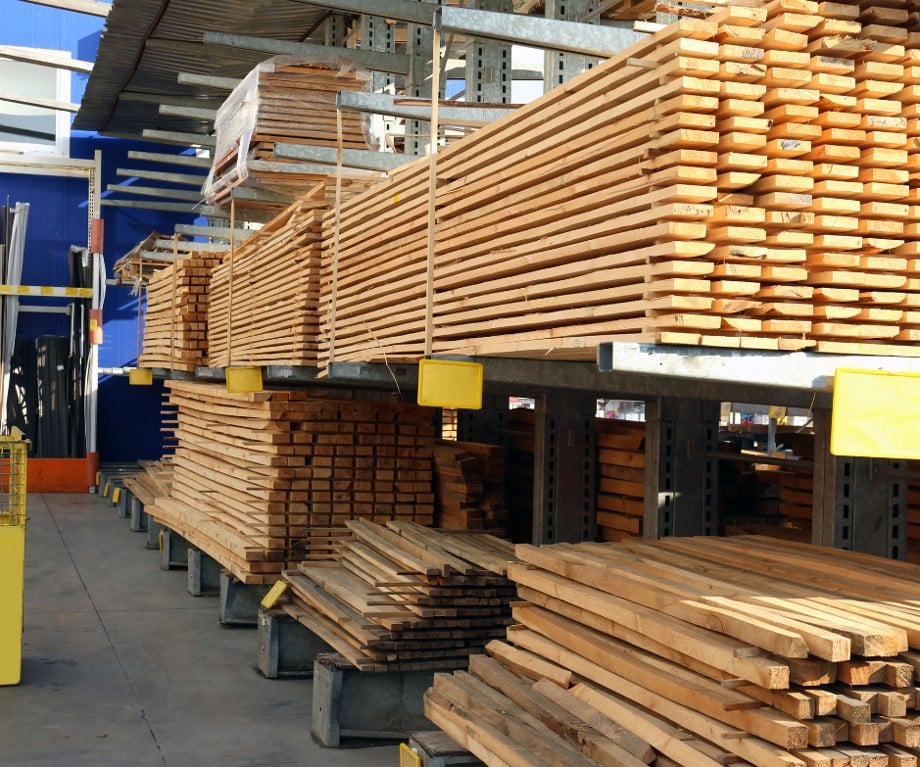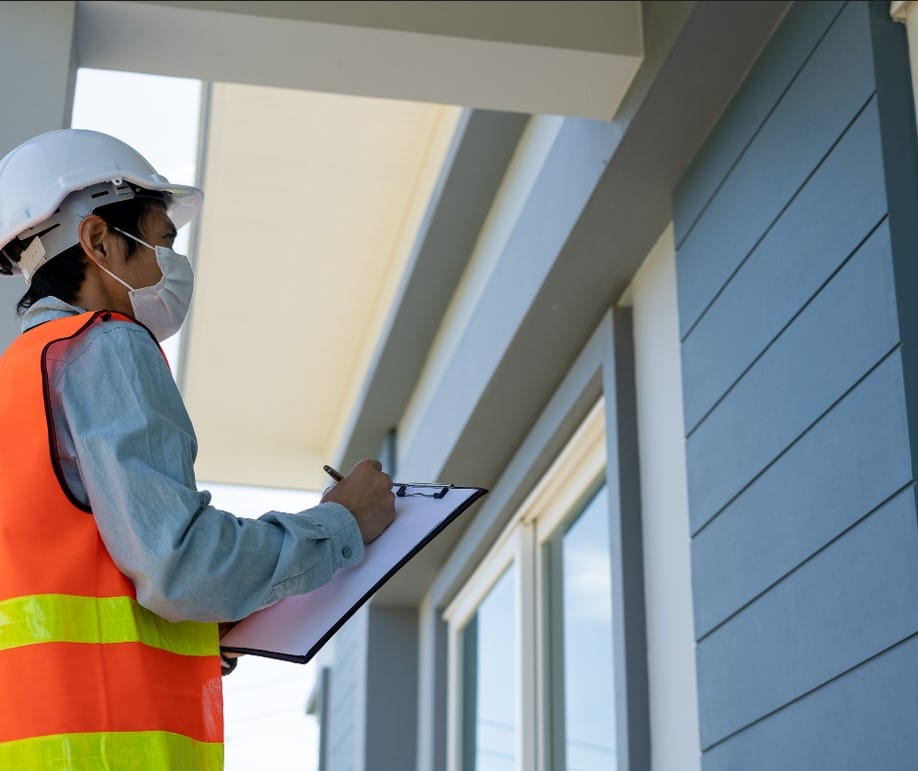In today’s dynamic climate, weather conditions significantly impact our homes and infrastructure. High-humidity and cold climates present unique challenges, highlighting issues that affect material durability and longevity. Managing wear and tear is crucial to safeguarding investments against nature’s relentless forces.
Understanding the Impact of Climate on Materials
High-humidity environments pose a unique set of challenges, notably in how moisture interacts with various materials. Wood swells, metals corrode, and paint peels under the relentless assault of moisture-laden air. On the flip side, cold climates are no less forgiving. Extreme cold can make materials brittle, leading to cracks and breaks that compromise structural integrity. When these two climates intersect, the potential for wear and tear escalates, challenging homeowners and maintenance professionals alike to stay ahead of damage.
Common Challenges in High-Humidity and Cold Climates
The common denominator in these scenarios is the accelerated degradation of materials exposed to harsh conditions. Whether it’s the rusting of iron, the rotting of wood, or the spalling of concrete, the evidence of wear and tear in such environments is unmistakable. This accelerated degradation not only affects the aesthetic appeal of structures but also their safety and functionality, raising the stakes for effective maintenance.
The Importance of Proactive Maintenance Strategies
Recognizing the importance of proactive maintenance strategies becomes crucial in this context. It’s not just about addressing wear and tear as it happens but anticipating it and taking preventive measures to mitigate its impact. This proactive approach ensures that structures can withstand the rigors of their environments, extending their lifespan and maintaining their value. It’s about moving from a reactive to a proactive stance on maintenance, leveraging knowledge of how climates affect materials to implement measures that prevent damage before it occurs.
The battle against climate-induced wear and tear is ongoing, with high humidity and cold temperatures as formidable adversaries. However, armed with an understanding of their effects and a commitment to proactive maintenance, we can protect our structures and ensure they stand the test of time. This not only preserves the value and integrity of our properties but also enhances our quality of life, making our homes and infrastructure resilient against the elements.

The Science of Humidity and Cold on Materials
Exploring the intricate ways in which weather impacts our buildings uncovers some truly intriguing insights, particularly regarding the influence of both high humidity and frigid temperatures on a variety of materials. Grasping these concepts is essential for anyone aiming to shield their properties from the relentless progression of wear and tear, thus guaranteeing their endurance and stability through effective management of wear and tear.
How High Humidity Affects Different Materials
The challenge of high humidity extends beyond mere human discomfort; it acts as a prime factor accelerating the deterioration of construction materials. When the air is laden with moisture, materials like wood can absorb it, leading to swelling, distortion, and ultimately, a compromise in structural soundness. Metals, too, are vulnerable, facing an increased risk of corrosion and rust, which diminishes their strength. Concrete and brickwork aren’t immune either; moisture infiltration can lead to mold development and structural compromise. Recognizing these risks is crucial for choosing materials adept at resisting the damaging effects of humidity.
The Effects of Cold Temperatures on Structural Integrity
On the other end of the spectrum, cold weather poses its own set of challenges. As temperatures drop, materials naturally contract, potentially leading to fractures, chips, or outright breaks. This is especially true for water-absorbent materials like concrete and brick; freezing temperatures can cause trapped water to freeze, expand, and inflict significant damage. Moreover, the cycle of freezing and thawing throughout the colder months can significantly heighten the extent of wear and tear, necessitating potential repairs or replacements with the arrival of spring.
Synergistic Effects of Humidity and Cold
When humidity and cold join forces, they can unleash a particularly devastating impact on materials, resulting in a compounded acceleration of wear and tear. For instance, elevated humidity can lead to increased moisture content within materials, which then freezes in cold temperatures, intensifying damage through freeze-thaw cycles. This dual threat can hasten the degradation of even the sturdiest of materials, highlighting the importance of accounting for both humidity and cold in the planning of maintenance routines and material selection.
Delving into the scientific nuances of how different weather conditions affect building materials offers more than just academic interest; it provides practical insights for safeguarding our structures against wear and tear. By carefully considering these environmental factors in our choices of materials and maintenance strategies, we can ensure that our buildings not only stand the test of time but also maintain their safety, functionality, and aesthetic appeal well into the future.

Identifying Vulnerable Materials and Structures
Navigating the complexities of maintaining our built environments requires a keen understanding of how certain materials and structural elements respond to the whims of weather. The battle against wear and tear, significantly intensified by humidity and cold, demands not just reactive measures but a proactive mindset geared towards preservation and care. Effective management of wear and tear is paramount in this ongoing effort to ensure longevity and stability.
Materials Most Affected by Humidity and Cold
In the diverse palette of construction materials, some are notably more vulnerable to the harshness of weather elements. Wood, with its natural porosity, readily absorbs moisture, leading to potential warping or rot in humid conditions. Metals, too, face their nemesis in humidity, with rust and corrosion lurking around the corner. Cold snaps bring their own set of challenges, particularly to concrete and brick, where water infiltration followed by freezing can lead to cracks and structural compromise. Acknowledging these susceptibilities is crucial for crafting effective maintenance and protection strategies.
Structural Weak Points in Buildings and Infrastructure
Every building and piece of infrastructure has its Achilles’ heel, particularly susceptible to climate-induced wear and tear. The roof and foundation, for example, are pivotal in maintaining structural integrity, yet they are constantly under siege by the elements. Water management systems, like gutters and downspouts, play a crucial role but can quickly become points of failure if not properly maintained. Furthermore, the seals around windows and doors are critical barriers against moisture and cold but can degrade over time, leading to potential damage inside and out. Pinpointing these vulnerabilities enables targeted actions to fortify these areas against the elements.
Early Signs of Climate-Related Wear and Tear
Keeping an eye out for the early whispers of damage can lead to significant savings and prevent larger issues down the line. Signs such as material discoloration, surface cracking, or the swelling of woodwork can all hint at underlying moisture issues. The emergence of rust on metal elements is a telltale sign of humidity’s relentless effects. Moreover, in colder regions, spotting cracks or breaks in the exterior can indicate that the destructive freeze-thaw cycle is at work. Early detection and intervention can turn the tide, preventing these initial signs from evolving into severe structural concerns.
Grasping the intricacies of material and structural vulnerabilities under adverse weather conditions empowers homeowners and building professionals to implement foresighted strategies against wear and tear. This proactive stance not only secures the physical integrity and visual appeal of properties but also champions a safer, more resilient built environment for future generations. The journey towards sustainability and durability in construction is a shared responsibility, one that begins with awareness and is sustained through vigilant care and maintenance. Effective management of wear and tear plays a pivotal role in preserving the integrity of our built environment for generations to come.

Maintenance Strategies for High-Humidity Environments
Steering clear of the pitfalls that high humidity levels pose requires a blend of foresight and action. This invisible aggressor can swiftly accelerate the degradation process, impacting the structural health and visual charm of your property. Yet, with a well-crafted approach to upkeep, the longevity and vibrancy of your spaces can be effectively preserved.
Enhancing Air Circulation to Ward Off Dampness
Central to keeping the humidity’s detrimental effects at bay is the strategic enhancement of your space’s air circulation. Ensuring a consistent flow of air is vital in dispelling moisture-laden environments that foster mold proliferation and material compromise. Integrating exhaust mechanisms in areas prone to dampness, like showers and culinary spaces, alongside the strategic placement of dehumidifiers, significantly aids in maintaining a dry atmosphere. Periodic checks and maintenance of your HVAC systems further reinforce your defenses against moisture, safeguarding the comfort and integrity of your indoor environments.
Choosing Materials and Finishes That Stand Up to Moisture
Your material and finish selections play a pivotal role in your property’s resilience against the encroachments of humidity. Favoring substances and products renowned for their resistance to moisture—be it through engineered solutions or naturally robust characteristics—can fortify areas exposed to high moisture levels. Employing water-repellent finishes on surfaces extends their lifespan and preserves their appearance, acting as a shield against the moisture that accelerates wear and tear. These mindful selections are foundational to fortifying your property against the relentless advance of humidity.
Instituting a Diligent Inspection and Upkeep Regimen
Adopting a disciplined routine for inspecting and maintaining your property stands as a bulwark against the insidious effects of humidity. Regular assessments allow for the early detection of moisture accumulation or leakage, enabling timely interventions. Keeping a vigilant eye on your property’s envelope—its roof, exterior walls, and foundational structures—is crucial in averting water intrusion. This systematic approach to maintenance not only curtails the potential for extensive damage but also embodies a proactive stance in property care, ensuring that minor issues are addressed before evolving into significant challenges.
Embracing these targeted strategies equips you to navigate the complexities of managing high humidity, guaranteeing that your property remains not only structurally sound but also aesthetically pleasing. This journey towards effective humidity management is anchored in the principles of adequate ventilation, judicious material selection, and consistent maintenance practices. Together, these steps form a comprehensive defense strategy, ensuring that your property stands resilient in the face of humidity’s relentless challenges, thereby safeguarding your investment for years to come.

Cold Climate Preservation Techniques
Navigating through the chill of winter requires more than just a warm coat; it demands a strategic approach to keep your property snug and damage-free. Cold weather can be tough on buildings, speeding up the process of wear and tear. However, with a thoughtful blend of preservation techniques, your home or building can withstand the frosty temperatures while retaining its warmth and structural health.
Insulation and Thermal Regulation Strategies
Keeping the warmth in starts with solid insulation and savvy temperature management. Insulating your walls, roof, and floors is akin to wrapping your property in a warm blanket, warding off the cold while trimming down on heating bills. Sealing leaks around doors and windows is equally crucial, as even the tiniest drafts can lead to significant heat loss. The addition of programmable thermostats further streamlines temperature control, ensuring your spaces are always at a cozy, energy-efficient warmth.
Materials and Technologies for Cold Climate Durability
The choice of materials and tech plays a pivotal role in fortifying your property against the winter chill. Opting for materials engineered for cold weather, like resilient concrete mixes or woods treated for low temperatures, can make a big difference. Windows with double or triple-pane glass offer an insulated barrier that keeps the cold at bay while optimizing your home’s energy use. These selections are not just about enduring the cold; they’re about embracing sustainability and efficiency in your property’s design.
Preventive Measures Against Freeze-Thaw Damage
The freeze-thaw cycle poses a significant risk, with the potential to expand small fissures into gaping cracks. Keeping drainage systems in tip-top shape ensures water flows freely away from your property, reducing the risk of ice formation and subsequent damage. Protective sealants can also shield exposed areas from water penetration, offering an extra layer of defense against the cyclical freeze-thaw. Regularly scouting your property for any signs of damage and addressing them promptly can stave off the compounding effects of water intrusion and ice formation.
Adopting these strategies for cold climate preservation not only prepares your property to face the winter but ensures it emerges unscathed and more energy-efficient. From robust insulation techniques to selecting the right materials and proactive damage prevention, these steps are crucial in reducing wear and tear. This approach not only maintains the structural and aesthetic integrity of your property but also makes it a warm, inviting space for all who enter, regardless of the freezing temperatures outside.

Combating Mold and Corrosion in Humid and Cold Climates
Battling the elements in humid and cold climates requires more than just a good maintenance routine; it demands a strategic approach to prevent the twin threats of mold growth and corrosion, which can significantly accelerate wear and tear on your property. By understanding the risk factors and implementing both effective treatment solutions and long-term prevention strategies, property owners can safeguard their investments against these pervasive issues.
Understanding the Risk Factors for Mold and Corrosion
The battle against mold and corrosion begins with a solid understanding of their common risk factors. High humidity levels provide the perfect breeding ground for mold, while fluctuating temperatures in cold climates can lead to condensation, further exacerbating mold growth. Corrosion, on the other hand, thrives in environments where moisture and metal meet, a common occurrence in both humid and cold climates. Recognizing areas in your property that are prone to these conditions is the first step in mounting a defense against these destructive forces.
Effective Cleaning and Treatment Solutions
Once you’ve identified potential hotspots for mold and corrosion, the next step is to tackle any existing issues head-on with effective cleaning and treatment solutions. For mold, this means employing thorough cleaning techniques with mold-killing solutions, followed by drying out the area completely to prevent regrowth. For combating corrosion, especially on metal surfaces, applying rust removers and protective coatings can halt the corrosion process and protect the metal from further damage. Regular cleaning and maintenance of these areas are essential to keep mold and corrosion at bay.
Long-Term Prevention Strategies
The key to managing mold and corrosion effectively lies in long-term prevention strategies. Improving ventilation and controlling moisture levels within your property are critical steps in creating an environment where mold and corrosion are less likely to thrive. This might include the use of dehumidifiers in damp areas, proper insulation to prevent condensation, and ensuring that buildings have adequate drainage to divert water away from the structure. Additionally, selecting materials and finishes that are resistant to moisture and corrosion can provide an extra layer of protection, ensuring that your property remains strong against the challenges posed by humid and cold climates.
By taking these proactive steps to understand, treat, and prevent mold and corrosion, property owners can effectively minimize wear and tear, preserving the integrity and value of their investments. This holistic approach not only addresses immediate concerns but also sets the foundation for a healthier, more durable property in the long run.

Technological Innovations in Climate Resilience
In the world of construction and home maintenance, staying ahead of the curve means embracing the latest technological innovations aimed at enhancing climate resilience. As extreme weather events become more common, the advancements in materials science, along with the integration of smart technologies into our homes and infrastructure, play a pivotal role in minimizing wear and tear. Let’s dive into how these innovations are shaping a future where our buildings are not just structures, but smart, adaptive systems capable of withstanding the challenges posed by the climate.
Advances in Materials Science for Improved Durability
The breakthroughs in materials science are nothing short of revolutionary, offering new hope for enduring the harshness of varying climates. Imagine a world where buildings heal themselves, thanks to self-healing concrete, or where metal structures resist the relentless assault of corrosion without constant maintenance. These aren’t just pipe dreams. They’re real advancements that are making structures more durable and sustainable. By incorporating materials designed to last longer and withstand extreme conditions, we’re stepping into an era where the long-term integrity of our buildings is significantly enhanced.
Smart Home and Infrastructure Technologies for Climate Adaptation
Smart technology has transformed our daily lives, and its application in making homes and infrastructure climate-resilient is a testament to its versatility. From intelligent HVAC systems that adapt to the changing weather to moisture detection sensors that warn us of potential leakages, smart technologies are at the forefront of climate adaptation. These systems not only contribute to a more efficient and comfortable living environment but also play a crucial role in preventing the kind of damage that leads to extensive wear and tear.
Future Trends in Climate Resilient Construction
As we look to the future, the trends in climate-resilient construction point towards a holistic approach that blends innovative materials, smart technology, and eco-friendly design. The goal is to create buildings that are not just reactive to environmental changes but are proactive in their resilience. This includes leveraging green roofs for better insulation, utilizing renewable energy to decrease dependency on traditional power sources, and designing buildings with flexibility in mind to adapt to future climate conditions. These future trends underscore a commitment to not only withstand the present climate challenges but to innovate for a future where our buildings contribute to a sustainable and resilient environment.
Embracing these technological innovations signifies a move towards a more sustainable, efficient, and resilient future. By integrating advanced materials, smart home technologies, and adopting forward-thinking construction trends, we’re not just reducing wear and tear; we’re redefining what it means to build and maintain structures in harmony with our changing climate.

Case Studies: Success Stories in Managing Wear and Tear
In the journey to protect our buildings from the inevitable effects of time and the environment, there are standout examples that not only inspire but also offer tangible lessons in effectively managing wear and tear. From homes that have successfully navigated the challenges posed by relentless humidity to infrastructure projects that endure in the frostiest conditions, these stories are beacons of innovation, strategic planning, and diligent care.
Residential Projects Overcoming High-Humidity Challenges
Picture a home nestled in a region where the air is thick with moisture, yet inside, the atmosphere is refreshingly dry and mold-free. This isn’t a scene from a futuristic novel but the reality of a residential project that has cleverly beaten high humidity. Through the integration of state-of-the-art ventilation systems, materials impervious to moisture, and intelligent humidity control devices, this home remains a comfortable sanctuary. This achievement highlights the necessity of adapting design and maintenance strategies to align with the specific demands of the local climate.
Infrastructure Maintenance Success in Cold Climates
Switching to a colder setting, imagine a critical piece of infrastructure, such as a bridge, that remains operational and safe throughout the winter months, despite being located in an area notorious for its freezing temperatures. The secret to its resilience lies in the use of specially formulated concrete and sealants designed to resist the damaging freeze-thaw cycles, coupled with a proactive approach to maintenance, including prompt snow and ice removal. This example shines a light on the importance of selecting appropriate materials and the value of preventative maintenance in ensuring the longevity of infrastructure in cold climates.
Lessons Learned and Best Practices
The insights gained from these examples are invaluable, teaching us that foresight and proactive measures are key to combating wear and tear. Opting for materials tailored to withstand specific environmental conditions is crucial, as is the embrace of technological solutions, from smart climate control in homes to advanced materials in construction. Equally important is the commitment to regular, climate-specific maintenance, ensuring that minor issues are addressed before they escalate into major problems.
These narratives do more than just recount successes; they provide a blueprint for future endeavors in property maintenance and protection. By drawing on these lessons and adhering to established best practices, we can better prepare our homes and infrastructure to stand resilient against the environmental challenges they face, preserving their safety, functionality, and aesthetic appeal for years to come.

Implementing Effective Maintenance Plans
Creating a maintenance plan that stands up to the rigors of climate while safeguarding your property from wear and tear is not just a task—it’s an ongoing commitment to resilience and foresight. The journey towards a climate-resilient property involves strategic planning, professional input, and smart budgeting. Let’s explore how you can develop an effective maintenance plan that keeps your property in top condition, regardless of what the weather throws your way.
Steps to Develop a Climate-Resilient Maintenance Plan
The first step in crafting a maintenance plan that can weather any storm (literally) is to understand the specific climate challenges your property faces. Whether it’s battling high humidity, enduring freezing temperatures, or both, your plan should address these challenges head-on. Start by conducting a thorough assessment of your property to identify potential vulnerabilities. Then, prioritize tasks based on their urgency and impact on your property’s resilience. Integrating seasonal checks and maintenance activities into your plan ensures that you’re always one step ahead of the climate.
Importance of Professional Assessments and Consultations
While DIY checks can be helpful, nothing beats the expertise that professionals bring to the table. Engaging with architects, structural engineers, or climate resilience experts can provide deep insights into the unique needs of your property. These professionals can help identify less obvious vulnerabilities and recommend specific improvements or preventive measures. Their assessments can form the backbone of your maintenance plan, ensuring it’s both comprehensive and tailored to your property’s specific requirements.
Budgeting for Long-Term Climate Resilience
Investing in your property’s resilience to climate-related wear and tear is just that—an investment. It’s essential to view maintenance and upgrades through the lens of long-term savings and value preservation. Allocating funds for regular maintenance, emergency repairs, and gradual upgrades can spread out the financial impact over time. Consider creating a dedicated reserve fund for maintenance, which can be built up gradually and drawn on when needed. This proactive approach to budgeting not only ensures that your property remains resilient and well-maintained but also helps avoid the financial strain of unexpected repairs.
Implementing an effective maintenance plan is a crucial step towards protecting your property from the inevitable challenges posed by the climate. By taking a strategic approach to planning, seeking professional advice, and smart budgeting for long-term resilience, you can minimize wear and tear and ensure that your property remains safe, functional, and beautiful for years to come.

CONCLUSION: Embracing the Challenge of Climate Resilience
Wrapping up our journey through the realm of climate resilience, it’s evident that safeguarding our properties against wear and tear is a multifaceted endeavor, blending challenge with opportunity. The insights we’ve shared pave a path for strengthening our buildings and infrastructure, making them robust enough to withstand the environmental shifts of our era. Let’s briefly reflect on the essential strategies we’ve covered and ponder on how we can infuse resilience more deeply into the heart of our communities and built environments.
Recap of Key Strategies for Managing Wear and Tear
We’ve traversed from understanding how different materials react under various climatic stresses to embracing technological advancements for better building resilience. Key to our discussion has been the selection of durable materials, the integration of cutting-edge technologies, and the pivotal role of regular, proactive maintenance. These strategies are the bedrock of ensuring our structures not only stand tall against the harshness of weather but also remain places of safety, function, and beauty.
The Critical Role of Innovation and Proactivity
The leaps we’ve seen in materials science and the adoption of smart home technologies underscore a vital truth: innovation is our ally in the battle against climate-induced degradation. Yet, it’s the proactive stance—anticipating rather than reacting to problems—that truly transforms our approach from surviving to thriving. This proactive, innovative mindset is what will propel us forward, enabling our buildings to meet the challenges of tomorrow’s climate head-on.
Moving Forward: Building Resilience into Our Communities and Structures
As we gaze ahead, the mission is to weave resilience into the very essence of our communities and architectural endeavors. This ambition extends beyond individual properties to embrace city planning, construction codes, and community initiatives, championing a collective resilience that shields not just our physical investments but our communal heritage and lifestyle. By championing these resilience principles widely, we can forge a shared defense against the vagaries of climate change, securing a legacy of durability and sustainability for future generations.
In embracing the complexities of climate resilience, we’re not just reacting to the present; we’re preparing for the future. Let’s move forward with the lessons learned, applying them not only to mitigate immediate wear and tear but also to craft a legacy of enduring, resilient communities. Together, we have the power to adapt and overcome, ensuring that our built world can face the challenges of climate change with strength and grace.


